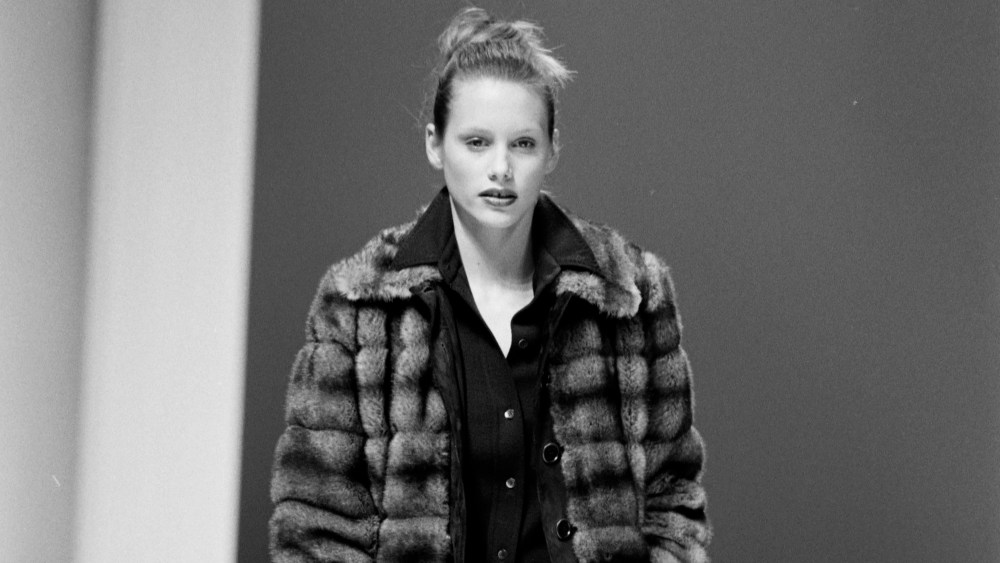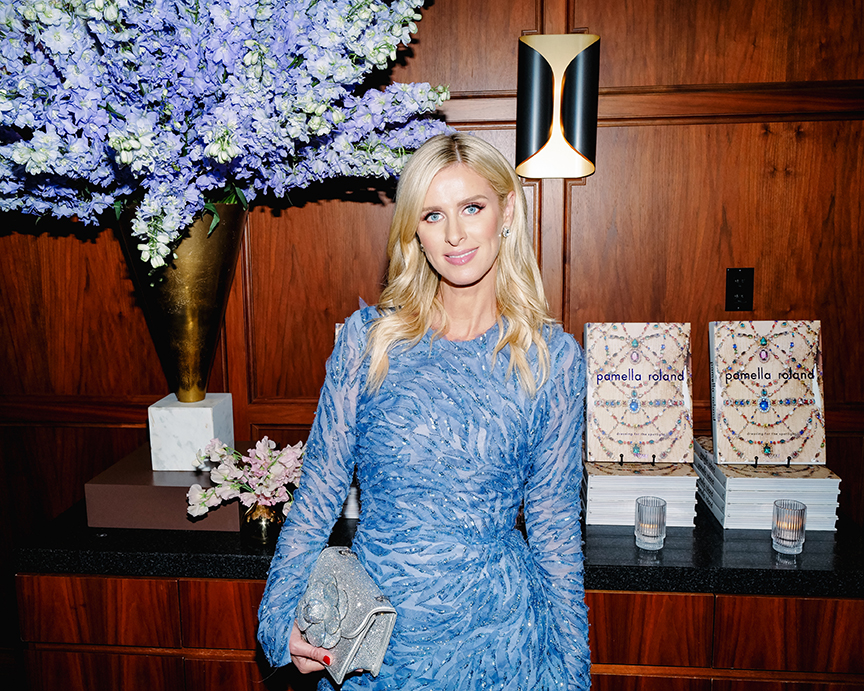LONDON — British model Georgina Cooper has died at the age of 46.
Her death was confirmed on Instagram by the model’s friends, Jade Parfitt and Erin O’Connor.
A source close to the model said that she died on the Greek island of Kos and that she had suffered from a blood brain hemorrhage as a result of long COVID.
Cooper, who was best known for her Cool Britannia look with her gapped front tooth, shot to fame on the ’90s fashion scene by being on the cover of The Face magazine photographed by Elaine Constantine and was a regular on the runways of brands like Helmut Lang, Giorgio Armani, Calvin Klein and Hussein Chalayan.

“She was such a people person, one of those models who just never changed. She was always 100 percent herself — that drew every single person to her. She never got airs and graces despite her huge success in the industry. Her energy was just infectious. She’s somebody that you always would gravitate towards backstage because you knew you’d have such fun chatting to her,” said Parfitt, founder of the Bath Fashion Festival, in a phone interview.
You May Also Like
When Cooper was 13, her mother entered her into the Elite Look of The Year contest in 1992, where she came in third place.
She was then signed by Premier Model Management, the agency run by former model Carole White, who was also Naomi Campbell’s agent at the time.

The agency also had Cindy Crawford, Linda Evangelista, Claudia Schiffer and Christy Turlington on its books in the ‘90s.
“She was a walk-in and she was so much fun. When she was young, she made a lot of money and she had this very edgy streak that was of the time. Everyone found the gap between her teeth quite amazing,” White recalled.
At 15, Cooper started working with the late renowned photographer Corinne Day and was part of a London model pack that included Parfitt, O’Connor and Kate Moss, who were dubbed as the cool, edgy girls.

In Day’s documentary “Diary,” the photographer explains that she “submitted three photographs of Georgina. In one she wore a black, bat-winged dress and in another an ’80s ‘slaggy’ sort of dress. There was also a portrait in a Judas Priest T-shirt. When these photographs came out in Ray Gun, Georgina called me and said ‘thanks’ because people were noticing her now. I was pleased for her because Georgina is a genuine kind of person.”
In an interview with The Cultural Omnivore, Cooper said that Day “really loved my look — she particularly loved the gap in my teeth — and she liked my personality too. The following week we did our first shoot for Ray Gun magazine.
“I was so young at the time I didn’t really understand how influential the work we were doing was until I got older and people would compliment me on the work we did together,” she added.

Cooper went on to be in shoots for American and British Vogue, Harper’s Bazaar U.S., i-D Magazine and British newspaper supplements, such as The Guardian’s Observer Magazine.
Veteran fashion stylist and former Elle U.K. editor Anne-Marie Curtis remembered the model for her “raw energy” and “being hilarious — she had no boundaries, she would say what was on her mind.”
“She was very anti-fashion with this real breath of fresh air and a really great model,” she added.
Karl Plewka, a former fashion stylist in the ‘90s and founder of the magazine Beauty Papers, met the model when working with Day and described her as bridging the gap between the “heroin chic” and the girl-next-door aesthetic.
“She was the type of model that could dip in and out of Corinne’s world to do a shoot with Lauren Hutton in American Vogue,” he said, which she did in the April 1999 issue.

“She was a girl from another era, there was something ‘70s about her,” Plewka added.
Cooper was an infectious character with a strong work ethic, according to many of her acquaintances.
“Georgina just took everything in her stride and nothing was too much trouble. She just thought she was this lucky girl from South London, but she was so much more than that,” said Plewka.
“What’s been wild since posting about Georgina is the amount of models that have got in touch with me to talk about her,” Parfitt added.
The pair appeared on the cover of British Vogue’s January 2002 issue shot by Mario Testino along with a handful of other British models, including the late Stella Tennant, Moss, Elizabeth Jagger, Alek Wek and more.
“Amongst models across the world, we chose an English girl that had personality. Georgina brought a different side to being,” said Testino.
“It was such a team and a real sisterhood. The press was always keen to pit models against each other, but to be honest, that wasn’t our vibe at all. We were each other’s support network,” said Parfitt.
Designer Markus Lupfer said that Cooper’s “lighthearted energy made every runway feel like a celebration” and that she had a way with making everyone around her smile, “on and off the catwalk. Her spirit, style, warmth, and energy will be deeply missed by us all.”

“You were an incredibly kind and funny human being, Georgina. I/we all admired and loved you so much for the warmth, generosity and gentle mischief you brought to the world. Many years have passed since we (our little ’90’s Brittannia pack) hung out together during the mad carousel era known as ‘show season’ — but, you ALWAYS stuck out to me for keeping it real and being proud of who you were,” said O’Connor on Instagram.
Cooper quit fashion in the early 2000s after giving birth to her son, Sonny, and transitioned to working as a midwife before going into the hospitality industry.
“I tried to continue modeling but it broke my heart when I had to leave him for work. I focused on modeling assignments in London but my life was at a crossroads and I decided that Sonny came first,” she told The Cultural Omnivore.
The South London-born model relocated to Bearsted, Kent to set up her new life after fashion, according to her Facebook, and worked at Fox & Goose, a chain of British pubs.
Cooper’s punk attitude is what set her apart from everyone. She was not one to follow the crowds.
“I think the time she had [in fashion] was so great because everyone remembers her and is talking about her now. You never had a bad time with her on set — she might have been a little hard to control, but you always knew what you would get out of her,” said Curtis.



